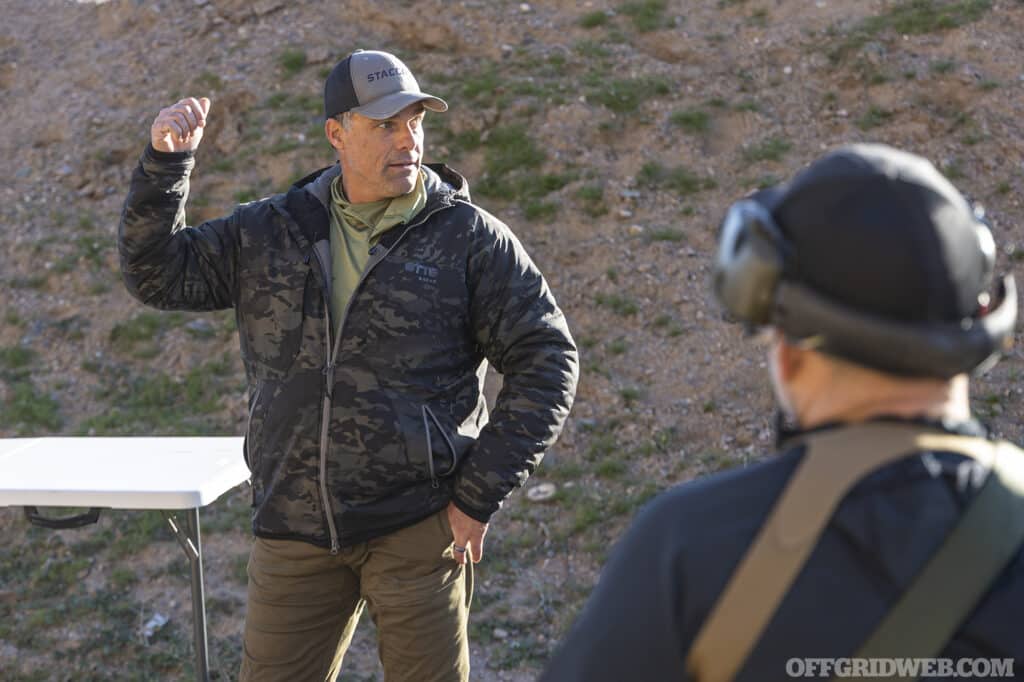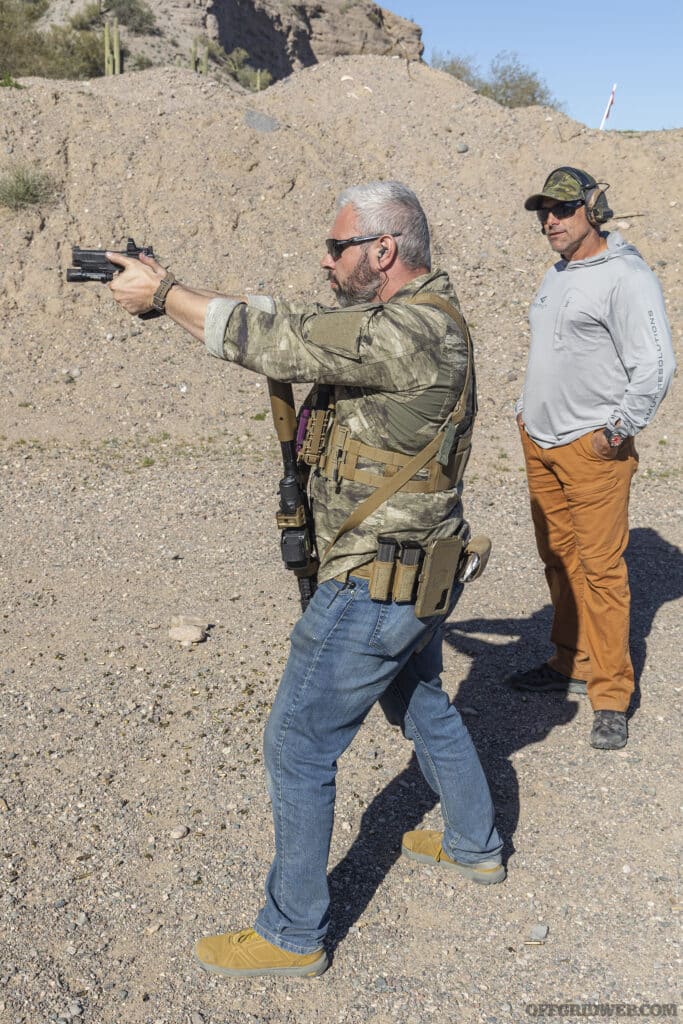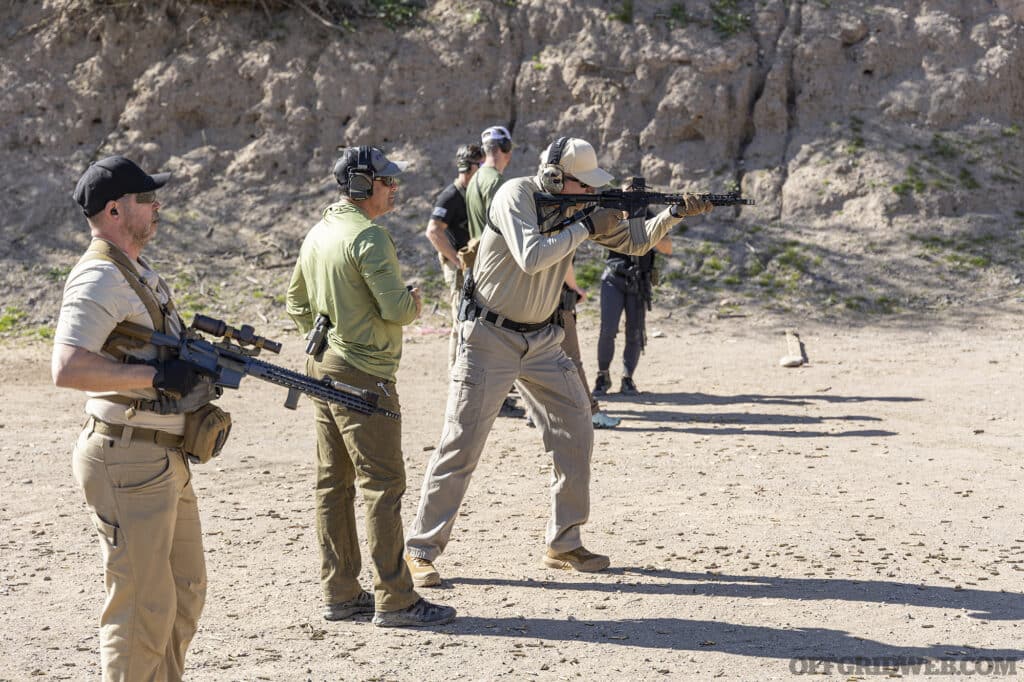RECOIL OFFGRID Preparation The Final Weapon: Gamut Resolutions
Pop quiz: What’s one thing that happens in every rifle gunfight? The answer is simple. At least one of the shooters raises the gun from some sort of ready position, aims it at the target, deactivates the safety, and fires the first round. There are many things that can happen after that, but the beginning is always the same. In training circles, this is often called a ready-up drill, and many advanced shooters see it as being excessively basic — perhaps even boring. Those same shooters might prefer to show off their lightning-fast reloads or ability to shoot from difficult positions, since this looks cool on social media. But for Bob Keller (owner of Gamut Resolutions), a U.S. Army Special Operations veteran who spent more than 10 years in 1st Special Forces Operational Detachment – Delta (also known as Delta Force, Combat Applications Group (CAG), or simply The Unit), the basic ready-up drill is the foundation all other training must be built upon. “The boring stuff is critical,” he explained. “Ready-up is a 100-percent guarantee in every fight. Everything else is a maybe.”
When Bob Keller talks about what wins gunfights, you listen. Over the course of more than two decades in special operations, he has participated in more than 1,000 real-world direct-action hits and had more than 400 engagements — a professional way of saying shooting an enemy combatant and/or getting shot at, often in extremely close quarters. These days, Keller trains American citizens how to survive real gunfights through classes from his company, Gamut Resolutions. We attended his Introduction to Tactical Carbine and Pistol course in Phoenix, Arizona, to improve our skills with these weapons.

Above: Bob Keller has more than a decade of experience winning fights as a member of what many consider to be America’s most elite special operations unit. As a result, he doesn’t hesitate to draw clear lines between important skills and useless range theatrics.
At the start of the class, as you might guess, we began with simple ready-up drills with our carbines. We were reminded that accuracy is more important than speed. However, the goal time was anything but slow: 0.5 seconds to a hit on a 3-inch circle at 10 yards. We were also reminded that the drill doesn’t end when the shot breaks; always reset the trigger and be prepared to shoot again. Don’t reactivate the safety too soon! If the gun goes empty, your reflex should be to reload immediately and get back on target.
Speaking of reloads, this was another subject where Keller’s experience shed some light on the reality of gunfights. “I’ve gone to bolt lock one time in combat. I only remember two other dudes I saw do it in a fight,” he said. As a result, he told students to treat emergency reloads as something that shouldn’t happen, like a malfunction. Instead, get into the habit of performing a combat reload (i.e., replacing a partially empty mag with a full one) whenever it’s possible. Keller also encourages tugging the mag downward during each reload, and periodically while carrying a carbine, ensuring it’s fully seated at all times. You may have seen someone shoulder a gun, only for the mag to fall out — in combat, that could be a fatal error.

Next, we practiced shooting our carbines from our support side. Keller explained this is essential for working around cover, and a skill you should practice until you have no doubt about using it when your life is on the line. Left-handed reloads were tricky; for those of us without ambidextrous rifles, we slid our support hand back to the receiver to press the mag release, then hit the bolt release with the firing hand. After getting more comfortable shooting from the support side, we began working transitions from shoulder to shoulder. This begins with the dominant hand releasing the pistol grip and moving forward to the magwell. Then, the support hand takes its place on the pistol grip, and the stock moves to the other shoulder. Don’t forget to switch feet with each transition for improved stability.
As for positional shooting, Keller didn’t spend any time teaching prone or kneeling techniques, which he says are rarely useful in his experience. Why? Consider how many of the obstacles around you in urban environments — buildings, walls, vehicles, etc. — will at least partly obscure your view of a human-sized target from a prone or kneeling stance. While standing, you can see targets clearly and keep moving as you return fire.

On day two, we started with a skill assessment with pistols at 25 yards. As Keller explained, there’s no warmup before a gunfight, so there was no warmup for us either. Each student was graded on a scale of 500 points based on accurate hits with slow and fast fire using both hands, dominant hand only, and support hand only. Keller said the test results should scare you — at 25 yards with a pistol, you have to do everything perfect, and if you miss, it can kill someone. To be on Keller’s team in The Unit, each member had to score above 400 points on demand, every single time. I only managed a 342.
Much like shooting a carbine, we were reminded to always be ready to continue firing after breaking the first shot; stay ready on the trigger as long as you’re on target. As for the draw, it’s just as important as a ready-up with a carbine, so practice it until it’s fast and consistent. Keller said, “There is no multi-step draw process in a gunfight. It’s one smooth motion.” We also practiced immediate action (i.e., malfunction) drills, reloads, and shooting one-handed from either side — the latter is challenging but necessary, due to the high likelihood you’ll be fighting through some form of injury.
Lastly, we brought it all together with carbine-to-pistol transitions. If you’re forced to draw your sidearm in combat, it’s typically the result of a malfunction with your primary weapon (carbine), but don’t make that decision lightly. Ideally, you should try an immediate action tap-rack to clear the malfunction first — maybe even try it twice. Don’t build the bad habit of switching to your pistol if you don’t absolutely have to.
Above: Don’t wait until your gun is empty to reload. Keep it topped off at all times, even if that means dropping a mag with a few rounds left.
The Gamut Resolutions pistol and carbine class was unrelentingly challenging, and served as a stark reminder that surviving a real gunfight requires an extremely high level of practice and proficiency. As Keller explained, if you’re able to pull off a drill with a target full of center-mass hits, you’re not pushing yourself hard enough — go faster, do it with your support side, or do it one-handed. Then, get to the point where you can do it cold every time. This practice builds confidence, and confidence wins fights — Keller says, “You must know you’re the most badass motherf*cker out there.”
Keller is based in Florida but offers classes throughout the United States. He also created The Gamut Challenge, a two-day event consisting of 16 different shooting scenarios plus over 20 miles of running or rucking. Check gamutresolutions.com for upcoming dates and locations.
Subscribe to Recoil Offgrid's free newsletter for more content like this.
Editor's Note: This article has been modified from its original print version for the web.

 STAY SAFE: Download a Free copy of the OFFGRID Outbreak Issue
STAY SAFE: Download a Free copy of the OFFGRID Outbreak Issue
No Comments